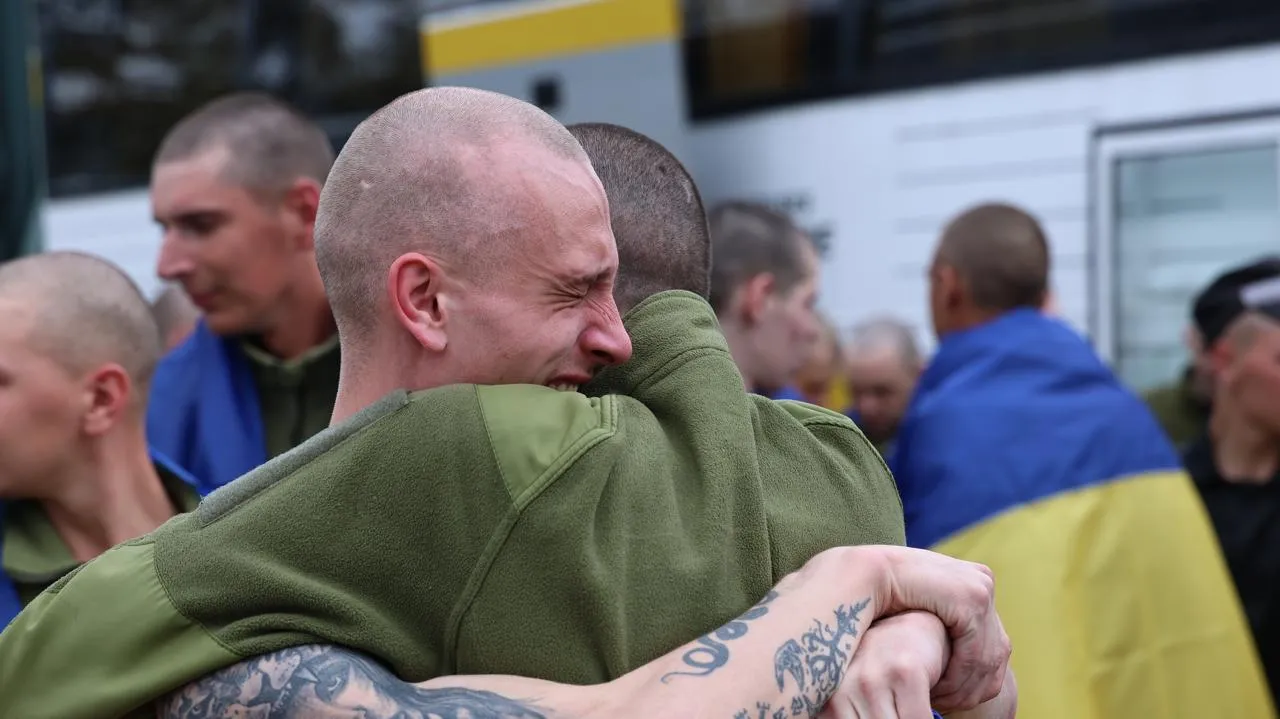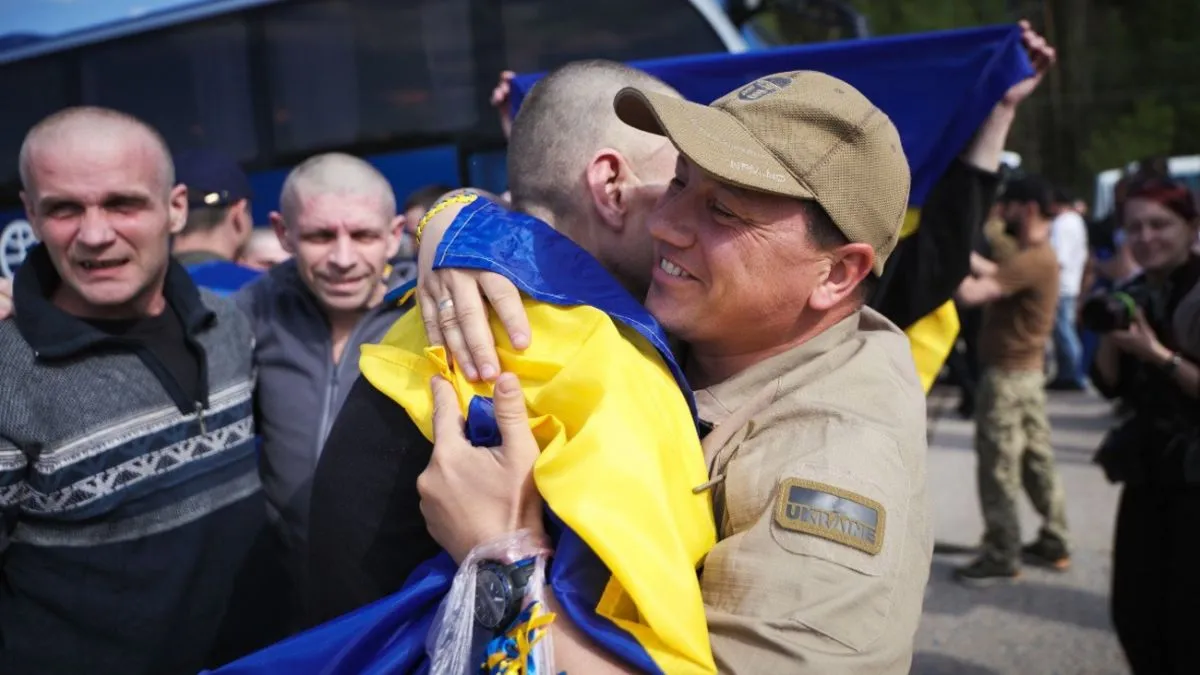KYIV — On Saturday, May 24, 2025, Ukraine and Russia completed the second stage of the largest prisoner exchange in the history of the war, returning home another 307 Ukrainian soldiers. This step, carried out as part of the "1000 for 1000" agreement reached during negotiations in Istanbul on May 16, became a ray of hope for thousands of families and a reminder of the fragility of diplomatic efforts amid an ongoing war. Over two days, Ukraine liberated a total of 697 people, with the final stage planned for Sunday. This exchange, the 66th since the start of the full-scale invasion, underscores Kyiv's relentless fight to bring back its citizens but also exposes deeper challenges: the fate of civilian prisoners and prospects for peace remain uncertain.
Defenders Return Home
The second stage of the exchange, announced by Ukrainian President Volodymyr Zelensky, saw the return of 307 prisoners of war, including soldiers from the Ukrainian Armed Forces, notably from airborne and drone units, as well as naval forces, territorial defense, border guards, and National Guard members. These warriors defended Ukraine on its hottest fronts — from Donetsk and Luhansk to Kherson, Kharkiv, and Zaporizhzhia. According to Andriy Yermak, head of the President's Office, some of them had been in captivity since the early months of the 2022 war, enduring inhumane conditions. "These are people who saw hell but did not break," Yermak stated on Telegram.
Among those released are 27 defenders of Mariupol, whose names became symbols of resilience after the city’s siege. The Coordination Headquarters for Treatment of Prisoners of War emphasized that for some units, including elite brigades, prisoners were released for the first time. "Each name is a story of struggle," said a representative of the headquarters. "We verify every detail so as not to leave anyone behind." Over two days, Ukraine returned 697 individuals, including 540 military personnel and 120 civilians, making this the largest such process in three years of war.
The Russian Defense Ministry confirmed that Moscow also received 307 of its own servicemen, clarifying that the exchange "initiated by the Russian side" will continue until Sunday. According to Ukrainian sources, the Russian list includes not only soldiers but also convicted collaborators used by Ukraine to replenish the exchange fund.

Istanbul: Diplomacy on the Edge
The exchange was the only tangible result of the negotiations in Istanbul on May 16, where the Ukrainian delegation was led by Defense Minister Rustem Umerov, and the Russian delegation by Putin’s adviser Vladimir Medinsky. The meeting, the first direct talks in three years, lasted two hours and was marked by tension. According to CNN, when negotiations reached a deadlock over Russia’s "unrealistic ultimatums," including threats to seize new territories, Turkish mediators proposed a "1000 for 1000" exchange as a way to unblock dialogue.
The Ukrainian side insisted on including civilians, political prisoners, and journalists, but Russia, according to Zelensky, limited the exchange to military personnel, citing the Geneva Conventions. "Children and civilians should return unconditionally," Zelensky stated on May 19. "But Moscow is using them as hostages." Insiders in diplomatic circles note that Russia consciously avoids releasing civilians, as they are witnesses to war crimes, which could complicate the Kremlin's position in international courts.
The absence of Presidents Zelensky and Putin, as well as US President Donald Trump, whose administration previously declared ambitions to end the war, highlighted the limited scope of the negotiations. "Russia sent a mid-level delegation, indicating their unpreparedness for serious dialogue," said a senior US State Department official who wished to remain anonymous. Trump, who demanded "immediate negotiations," has recently hinted at the possible withdrawal of the US from the process if progress is not made, adding uncertainty.
Human Stories Behind the Numbers
Behind each exchange figure lie heartbreaking stories. One freed individual, a paratrooper from the 80th Brigade who spent two years in captivity, described torture and hunger: "They kept us in pits, but we knew Ukraine wouldn’t abandon us." Another, a border guard from Kherson region, was able to embrace his mother after three years apart. The Coordination Headquarters, which includes the Security Service, Military Intelligence, the Ministry of Internal Affairs, and the Ombudsman’s Office, prepared medical and psychological support for the released, though many will require prolonged rehabilitation.
This exchange marked the 66th since the start of the war, bringing the total number of returnees to 5,454. Yet thousands, including civilians and children, remain in Russian captivity. According to the UN Monitoring Mission, all prisoners held in Russia are subjected to systematic torture, and Moscow blocks Red Cross access to detention sites. Human Rights Commissioner Dmytro Lubinets provided the Vatican with a list of journalists in captivity, hoping for mediation by the Holy See.
Geopolitical Dance
Although the exchange is a humanitarian breakthrough, it does not resolve broader issues of the war. Negotiations in Istanbul, initiated after European leaders called for a 30-day ceasefire, turned out more as a tactical maneuver than a step toward peace. According to Turkish Foreign Minister Hakan Fidan, Russia agreed to a second meeting but without clear commitments. The Vatican, led by newly elected Pope Leo XIV, who met with Zelensky, and Switzerland expressed readiness to host the next round, but prospects for Zelensky-Putin talks remain elusive.
Kiev insiders speculate that the exchange may be an attempt by the Kremlin to weaken international pressure ahead of new EU sanctions. "Putin uses prisoners as currency to buy time," said a Ukrainian diplomat involved in preparing negotiations. Meanwhile, Zelensky, despite internal pressure for compromises, insists on the "all for all" formula, which includes civilians and children.
Looking to the Future
The anticipated third stage of the exchange on Sunday, May 25, aims to return 1,000 Ukrainians and Russians, but the question of further steps remains open. Ukraine, according to Umerov, has already coordinated a step-by-step plan involving all key institutions. However, Russia, which systematically violates the Geneva Conventions, may prolong the process, as it did in 2023–2024, when pauses between exchanges reached half a year.
For families waiting for loved ones’ return, each day is a struggle with uncertainty. On May 17 in Warsaw, hundreds took part in a rally supporting prisoners, holding their portraits. In Kyiv, mothers and wives of defenders of Mariupol gather daily near the Presidential Office, demanding faster exchanges. "My son is in captivity at Azovstal," says Nataliya, holding a photograph. "This exchange gives hope, but I won’t calm down until I hold him in my arms."
This exchange is not only a diplomatic victory but also a testament to the resilience of Ukrainians who, despite exhaustion and loss, continue fighting for every person. But behind this success lie complex questions: will civilians be returned? Will the exchange be a step toward peace, or just a pause in an endless war? While Ukraine awaits Sunday, the world watches how the fragile thread of humanity holds amidst the storm of geopolitics.



